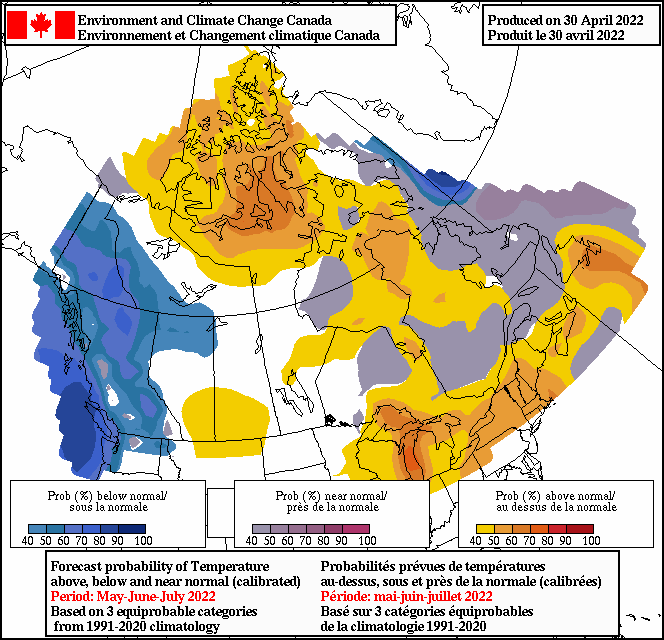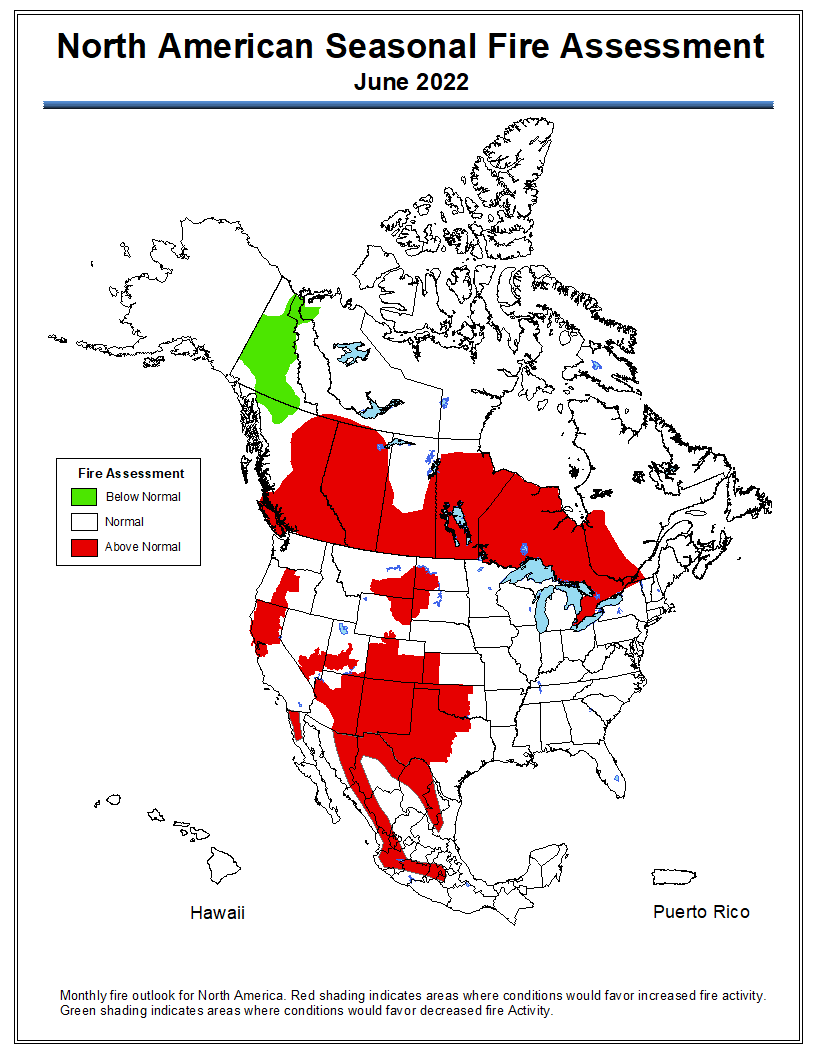Canada is seeing a subdued start to the wildfire season this year thanks to a cooler and wetter spring than usual, but Canadians should be prepared for an increase in fire activity heading into the summer, experts say.

Out west, parts of British Columbia and Alberta are seeing some wildfire activity as expected but nothing that has set off alarm bells yet.
As of May 3, there were 13 active fires burning in B.C. Since the start of April, a total of 91 fires have been reported in the province but none were highly visible or posed a potential threat to public safety.
Meanwhile, in Alberta, there were nine active wildfires as of Tuesday, but none of note, according to provincial data.
There are currently no active wildfires in both Saskatchewan and Manitoba.
Cooler temperatures and high levels of precipitation over the winter and spring period has suppressed the early wildfire season activity compared to the same time last year, meteorologists say.
“Overall, the late spring, I think with added snowpack in some areas and … cool conditions has helped to not allow for a quick start of the wildfire season across the country,” said Global News meteorologist Ross Hull.
“I believe that will start to change as the snowpack melts and areas that are already quite dry, experience warmer conditions and maybe some wind as well, so that will help to increase the fire risk.”
What to expect this year
It is normal for Canada, which has nine per cent of the world’s forests, to experience wildfires during the summer months.
Canada’s wildfire season typically starts in April, hits its peak in July and ends in October.
Last year, the country saw a record-setting heat wave and an early start to the wildfire season with high intensity and overall numbers, particularly in B.C., where a provincial state of emergency was declared in July.
In total, the BC Wildfire Service says it battled over 300 active wildfires at the peak of the wildfire season, in what was a “tremendously challenging year”.
From April 1, 2021 to March 28, 2022, a total of 1,642 wildfires burned 869,279 hectares of land across the province, forcing mass evacuations and causing catastrophic destruction.
“We’re definitely in a different spot from last year,” said Chelene Hanes, a physical scientist with Natural Resources Canada.
In B.C., for the month of May and June, below seasonal average temperatures are expected for much of the province, said Derek Lee, a meteorologist for Environment and Climate Change Canada in Vancouver.

Get daily National news
This is because of the La Niña climate pattern.
During La Niña years, trade winds are stronger and water temperatures become cooler-than-average in the eastern Pacific Ocean near the equator. Hence, Northern U.S. and Canada tend to be wetter and colder.

“I would imagine that with the conditions being wetter than usual, things will take a bit longer to dry out,” said Lee.
A “heat dome,” which is a high-pressure system that traps warm air underneath it, raised the mercury to unprecedented levels in Canada last year, shattering more than 100 heat records across British Columbia, Alberta, Yukon and Northwest Territories.
Hull said the likelihood of that weather pattern occurring again are not as high, but portions of the country could still experience extreme hot conditions this summer, which are a key contributing factor for wildfires.
Lee said it’s still uncertain to forecast if the same heat dome scenario could happen this time around, but it is a possibility that Canadians should be prepared for.
The fire activity could pick up pace as soon as the snow melts and hot, dry and windy conditions kick in, Hanes said.
“There are already areas through the Prairies that are in an extreme drought condition, so it won’t take much if you get hot weather and also strong winds to spark some fires,” added Hull.
Meanwhile, it’s a different story in the United States, where raging fires in the southwest, including New Mexico and Arizona, have already torched homes and forced residents to flee.
In southern U.S., the La Niña pattern has the opposite effect to what Canada or northern U.S. experiences, bringing severe dry conditions.

Preparing ahead
On Tuesday, the B.C. government announced that it was extending its Alert Ready system beyond tsunami warnings and Amber Alerts to include imminent threats from floods and wildfires.
During a news conference, Public Safety Minister Mike Farnworth said the expansion of the system that issues public safety alerts through TV and radio broadcasters, as well as mobile devices, is because of an increase in the frequency of threats due to climate change.

Preparations are also underway for the core of the wildfire season, with specialized crews receiving training and new staff being recruited, said Brent Martin, deputy director of predictive services with BC Wildfire Service, during that same news conference in Victoria.
“Our crews are already in place and ready to respond,” he said.
The province is also investing over $13 million in community resiliency grants across 107 local governments and First Nations throughout B.C., helping reduce risks this summer, Martin said.
With global temperatures rising, keeping a close eye on short-term forecasts can help better prepare for upcoming disasters, Lee said.
“We can’t really rely on the long-range forecast,” he said, because they are not as accurate.

At the Canadian Forest Service, Hanes said they are developing models, including using remote sensing, that can estimate the probability of fires igniting and their potential growth based on current weather conditions to help fire management agencies better prepare to respond in time.
“We’re always trying to improve those models so that the fire managers have the best available information to make the decisions that they need to make on a daily basis during the fire season.”
With the majority of fires particularly in spring caused by humans, such as through campfires, Hanes urged Canadians to pay close attention to any restrictions issued by their provincial and local fire management agencies.
There are also a number of ways Canadians can mitigate their personal risks and fire impact, she added, pointing to Fire Smart Canada, which offers resources to help fireproof homes among other things.
— with files from Global News’ Richard Zussman












Comments